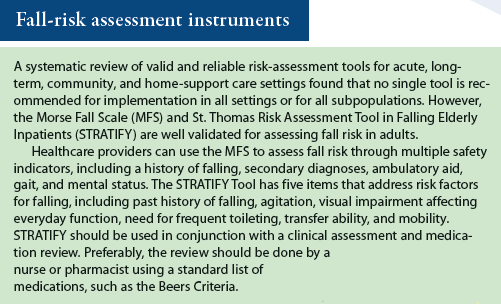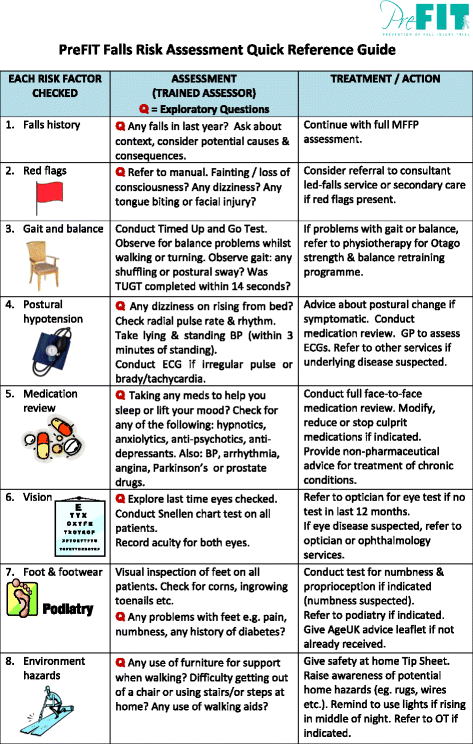The 8-Minute Rule for Dementia Fall Risk
The 8-Minute Rule for Dementia Fall Risk
Blog Article
The Main Principles Of Dementia Fall Risk
Table of ContentsThe Ultimate Guide To Dementia Fall RiskSome Known Details About Dementia Fall Risk Dementia Fall Risk Things To Know Before You Get ThisExcitement About Dementia Fall RiskAn Unbiased View of Dementia Fall Risk
You may be anxious because you have actually had a fall prior to or because you have actually seen you're starting to really feel unsteady on your feet. You may have observed modifications to your health and wellness, or simply really feel like you're reducing down a little. Whatever the factor, it isn't uncommon to end up being careful and lose self-confidence, and this can stop you doing the important things you used to do and make you feel more isolated.If you've had a loss or you have actually begun to really feel unstable, inform your medical professional also if you feel fine or else. Your medical professional can examine your equilibrium and the method you walk to see if enhancements can be made. They may be able to refer you for a drops danger evaluation or to the falls prevention solution.
This info can be acquired through meetings with the person, their caretakers, and an evaluation of their clinical documents. Begin by asking the individual about their history of drops, including the regularity and conditions of any recent drops. Dementia Fall Risk. Inquire regarding any kind of flexibility issues they may experience, such as unstable or problem walking
Conduct a complete evaluation of the individual's medications, paying particular attention to those recognized to boost the threat of drops, such as sedatives or drugs that reduced blood pressure. Identify if they are taking multiple medicines or if there have been current modifications in their drug program. Assess the person's home atmosphere for possible risks that can increase the threat of falls, such as bad lighting, loose rugs, or absence of grab bars in the shower room.
Dementia Fall Risk for Beginners
Overview the individual with the autumn threat evaluation form, describing each inquiry and videotaping their responses precisely. Guarantee that the specific recognizes the objective of the assessment and feels comfortable offering truthful responses. Compute the overall threat rating based on the responses supplied in the evaluation type. Establish the person's risk category (low, tool, or high) based upon the total score and the presence of automatic high-risk standing variables.
Frequently keep track of the person's progression and reassess their threat of falls as required. Offer recurring education and learning and support to advertise security and decrease the risk of falls in their day-to-day living tasks.
Several research studies have actually shown that physical treatment can help to minimize the threat of falling in adults ages 65 and older. In a brand-new study (that considered falls risk in ladies ages 80 and older), scientists determined the financial influence of choosing physical therapy to avoid drops, and they located that doing so saves $2,144, including all the concealed prices of your time, pain, missed out on life occasions, and the bucks spent for solutions.
The Buzz on Dementia Fall Risk
Evaluating your balance, strength, and walking ability. A home security analysis. Based on the assessment results, your physical therapist will design a strategy that is customized to your particular demands.
Older adults that have difficulty strolling browse this site and speaking at the same time go to a greater risk of falling. Dementia Fall Risk. To aid boost your security throughout everyday activities, your physiotherapist might develop a training program that will certainly challenge you to maintain standing and walking while you do an additional job. Examples consist of strolling or visit this site standing while counting backwards, having a discussion, or lugging a bag of grocery stores
Your physiotherapist also can recognize which tasks you must avoid to remain safe. Community-based falls avoidance programs help people to: Lower their fear of dropping. Set objectives for increasing their physical task. Make their homes safer. Exercise more to boost their toughness and equilibrium. These programs usually are led by volunteer instructors.
Not known Details About Dementia Fall Risk

Measles, or rubeola, is an extremely infectious, severe viral contagious condition caused by the measles infection. Some people think about measles as simply a rash and high temperature that clears up in a few days; however, measles can cause serious health and wellness difficulties, particularly in kids younger than 5-years-old. The very best security against measles is the measles, mumps, and rubella (MMR) vaccine.
Falls are a typical cause of injury amongst older adults.
Dementia Fall Risk Can Be Fun For Anyone

She has a medical history of seizure problem and high blood pressure. She is getting an IV infusion and taking Gabapentin and Lasix. She has no history of drops, her stride is consistent, and she nullifies with no concerns. The previous registered nurse states that she requires help to the shower room when she needs to go.
Examples of common loss interventions/measures include: Ensuring a person's vital items are available. Putting the person's bed rails up with the alarm on. Assisting a person while they're rising from bed. Past comprehending how to utilize the Johns Hopkins Fall Danger Analysis Tool, it is necessary that centers incorporate its use into a much more detailed fall avoidance plan.
Report this page